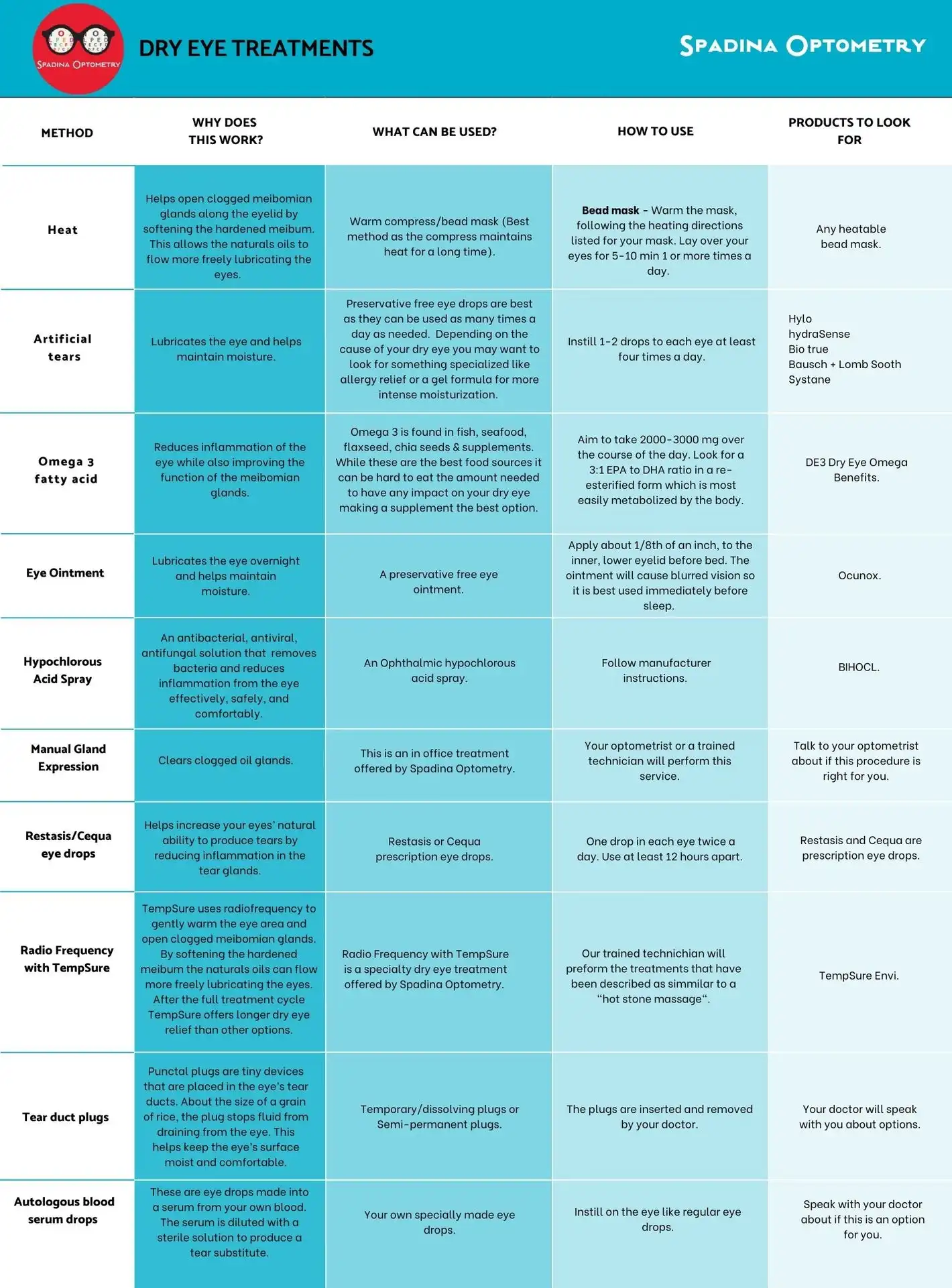
Dry eye occurs when your eye doesn't produce enough tears, or the right kind of tears. This can have a big impact on your productivity and overall quality of life and is one of the most common eye issues our patients are facing.
Common symptoms associated with dry eye are:
- Burning, stinging, or a scratchy sensation
- Eye redness
- Blurred vision and/or fluctuating vision throughout the day
- Light sensitivity
- Eye fatigue
- Feeling like there is something in your eyes
- Difficulty wearing contact lenses
- Watering eyes
There are 2 main types of dry eye disease:
- Evaporative dry eye, also known as Meibomian Gland Dysfunction (MGD) - happens when the tear film evaporates too quickly because the meibomian glands (oil glands) are not producing enough oil to coat the tear film. MGD is the leading cause of dry eye disease.
- Aqueous deficient dry eye- the lacrimal glands (water glands) that produce the tears are not functioning properly so they cannot create the water layer of the tear film. Health issues such as autoimmune disorders or inflammatory conditions can both affect this layer.
Some patients may even experience a combination of both forms.
What causes Dry Eye Disease?
To understand why your eyes are dry, it's important to know what a healthy tear film looks like. Your tear film is made up of three main ingredients:
Lipid layer- composed of oil called meibum which gets pushed out from the meibomian glands. The job of the lipid layer is to prevent your tears from evaporating too quickly.
Aqueous (water) layer- the salt water component forming the bulk of your tears. It contains a variety of different elements to help protect your eyes while lubricating them.
Mucous layer- composed of mucin which coats the cornea and helps spread the tear film evenly across your eye.
If your tear film composition is imbalanced or you are not able to produce enough good quality tears, this can leave you with dry eyes.
Finding the root cause for your dry eye can be difficult as there are many factors that can cause our eyes to not produce healthy tears. Here is a list of possibilities:
- Prolonged computer/screen use
- Lack of blinking during screen use
- Medications like antihistamines, mood stabilizers, birth control, hormone replacement, beta-blockers, pain relievers, gastrointestinal medications, retinoid, chemotherapy and more.
- Environmental, air quality, heating & cooling systems
- Medical conditions likes Diabetes, Sjrogren's syndrome, Rheumatoid arthritis, thyroid disorders, Lupus
- Natural aging process, menopause
- Allergies
- Smoking
- Wearing a face mask
What can I do?
Treatments for dry eyes range from simple artificial tear drops or ointments, to special tear duct plugs that keep the natural tears on the eye. In some cases, dry eye can be further treated with oral supplements containing Omega-3 fatty acids. In other cases, it may be treated with a prescription eyedrop that stimulates tear production.
For more detailed treatment options please see the attached chart.
Your eye doctor should be made fully aware of any dry eye symptoms to maintain the long-term health and vision of your eyes.

